Realizing Children’s Rights in Seychelles
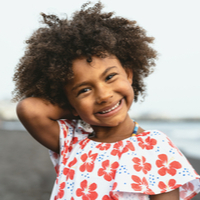
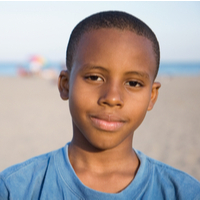
Children in Seychelles are protected by a system of law that ensures fundamental rights and adequate standards of living. However, children are vulnerable to serious risks that are not carefully assessed by the national legislation including child labor and sexual exploitation, discrimination of disabled children, child imprisonment.

Children’s Rights Index: 8,85 / 10
Yellow level: Satisfactory situation
Population: 98.431
Pop. ages 0-14: 24 %
Life expectancy: 73.47 ans
Under-5 mortality rate: 13.73 ‰
Seychelles at a Glance
The Seychelles are an island republic in the western Indian Ocean, comprising about 115 islands with almost 98,000 citizens. The principal islands are Mahé, Praslin, and La Digue, but also the Aldabra, Farquhar, and Desroches groups are included in the territory of the Republic.
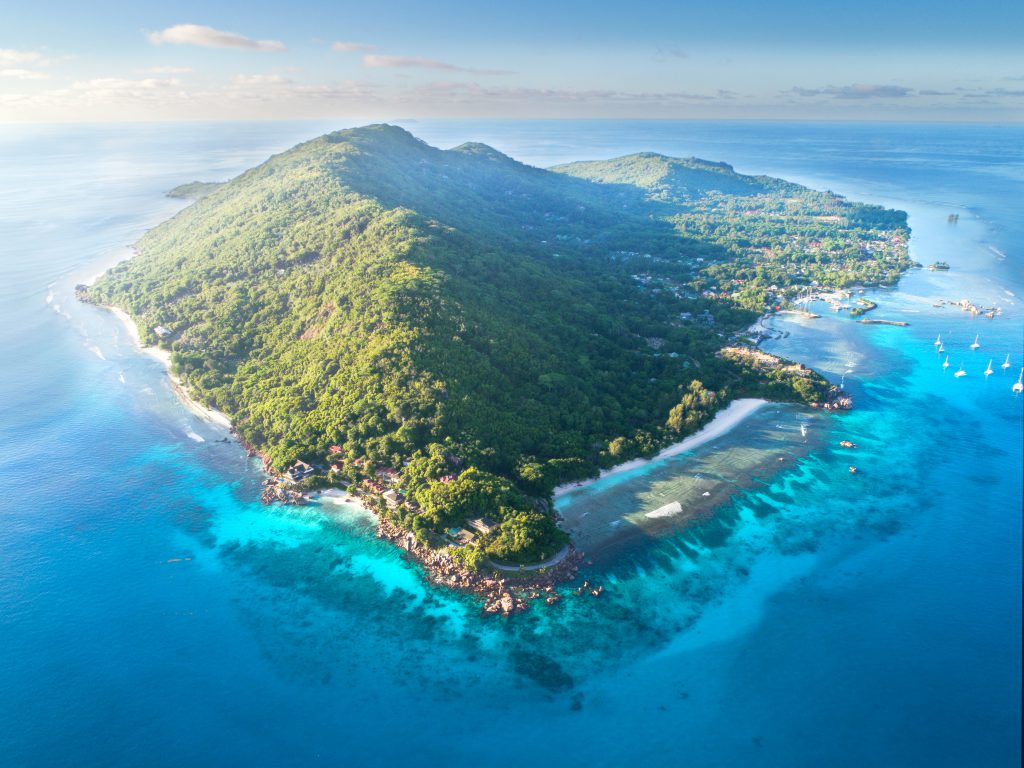
Historically, when the British East India Company arrived on the archipelago in 1609, the Seychelles were uninhabited and became a pirate haven. Then in 1756, the French claimed the islands and administered them as part of the colony of Mauritius. In 1814, with the Treaty of Paris, the British gained control of the island and changed the name from the French Séchelles to the Anglicized Seychelles. Finally, in 1975, the islands became self-governing and independent in 1976. Following a coup d’état, a socialist one-party state ruled the country from 1977 to 1993, when the Constitution of Seychelles was amended to allow the registration of political parties. From that moment Seychelles is a socialist multiparty republic, currently ruled by Danny Faure. The next presidential election is due in October 2020.
Due to its historical background, Seychellois culture has been shaped by a combination of European, African, and Asian influences which resolves in a multi-ethnic and multilingual population. Indeed, the country’s judicial system derives from English common law and the French Napoleonic Code, and also includes elements of customary law.
In the Republic of Seychelles, the primary responsibility for internal security of the state is of the Seychelles police, which includes the unarmed police, the armed paramilitary Police Special Support Wing, the Anti-Narcotics Bureau, and the Marine Police Unit. Instead, the external security is duty of the Seychelles People’s Defense Forces, including infantry, the Special Forces Unit, the Coast Guard, and the Air Force, which assist police with internal security as needed. These military services report to the President, who acts as Minister of Defense.
According to the UNDP Human Development Index, Seychelles ranks forty-sixth worldwide for human development, with a rating of 0.806 (2013), the highest in Africa. Furthermore, the Republic of the Seychelles has achieved most of the United Nations Millennium Development Goals and has the highest Human Development Index in Africa. Anyway, significant human rights issues included lack of enforcement of laws against domestic violence against girls and women, including rape, and forced labor which are the worst scars of these beautiful islands. Indeed, despite the fact that absolute poverty levels are low, inequality in the distribution of human development across the population at the country level remains significant (Seychelles MPI Report, 2020).
The global Covid-19 crisis has demonstrated Seychelles’ vulnerability to external shocks due to its heavy reliance on tourism, and climate change adaptation also remains a critical challenge as key infrastructure and housing is threatened by coastal erosion and severe weather events (World Bank Group, 2020).
Status of Children’s Rights[1]
Seychelles acceded to the Convention on the Rights of the Child (CRC) on 7 September 1990, but international treaties are not binding in the national legal system unless they have been domestically ratified by an act or a resolution of the legislature, which has not occurred with respect to the CRC. Although the Convention on the Rights of the Child does not take precedence over national law, the Constitution of Seychelles expressly provides (Article 48) for the inalienable protection of human rights and fundamental freedoms.
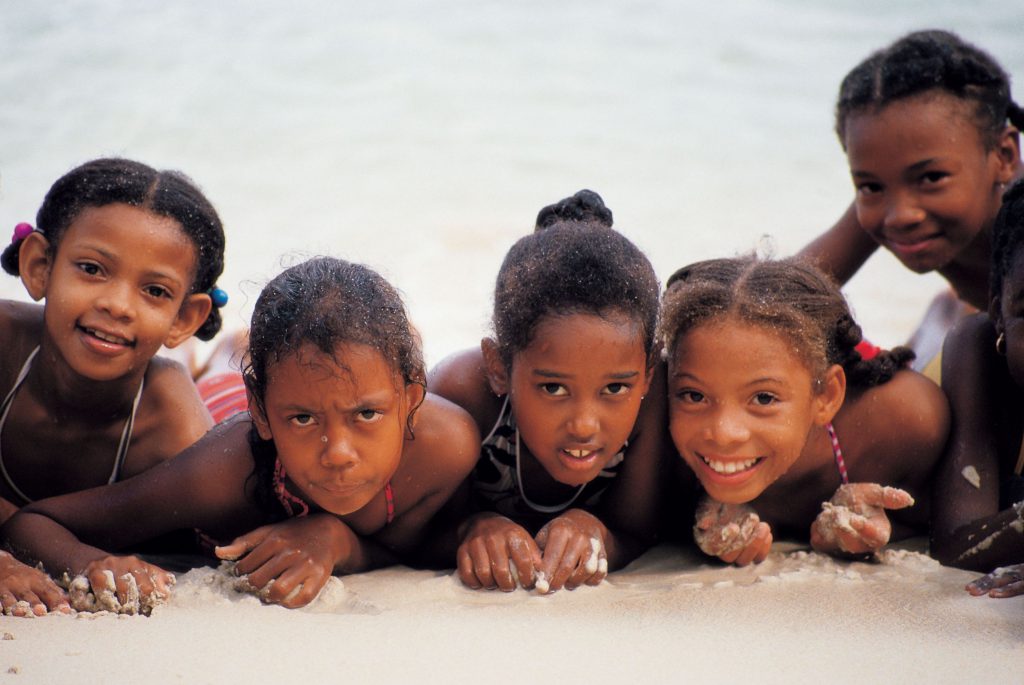
Furthermore, the CRC has not been incorporated into national law but Seychelles has adopted a number of legislative and policy measures with a view towards implementing specific provisions of the Convention, e.g. The Education Act (2004), The Seychelles Framework for Early Childhood Care and Education (2010) and The National Plan of Action for Children (2005-2009). Furthermore, there have also been different amendments made to the Children Act, e.g. Children (Amendments) Act 2005, to introduce the National Commission for Child Protection (Seylii, 2018).
The Republic of Seychelles is also a party to the Optional Protocols to the Convention on the Rights of the Child on Armed Conflict and on the Sale of Children and it has signed, but not ratified the third Optional Protocol on a Communications Procedure. The country is also a party to the 1980 Hague Convention on the Civil Aspects of International Child Abduction.
The law of Seychelles guarantees that citizenship is derived by birth in the country or if born abroad from Seychellois parents, and births in the country have to be registered immediately. Hence, every child has the right to identity, the right to protection, and parents are subject to the rules on parental responsibility until the age of 18 of their children. Upon the death of a parent, children can automatically benefit from semi-orphan financial assistance regardless of their financial situation, which reflects the Government’s determination to be careful in the provision of social protection. Apart from that, in Seychelles, there is no conscription into military services; children under 18 may be voluntarily recruited with parental consent, but no minimum age appears to be specified in the law.
Addressing the Needs of Children
Right to Food, Health and Water
The Seychelles performs relatively well against other developing countries but still experiences a malnutrition burden among its under-five population. Indeed, child malnutrition in Seychelles was reported at 0.33333 in 2019, according to the World Bank collection of development indicators. The data are based on the World Health Organization’s new child growth standards released in 2006. Child malnutrition is linked to poverty, low levels of education and poor access to health services. Also, there is insufficient target data to assess the Seychelles’ progress for under-five overweight, under-five stunting, under-five wasting, and infant exclusive breastfeeding.
The Constitution of Seychelles at Article 24(2) (c) imposes on the Government the obligation to combat disease and malnutrition through the provision of adequate nutritious foods and drinking water. Indeed, the ability to afford to pay for a water supply and the right of access to that supply are a prerequisite for the achievement of a standard of living adequate for a child’s healthy development. During the last decade, the diseases associated with lack of sanitation and contaminated water have been virtually eliminated.
Moreover, in 1992 the Republic of Seychelles has become a state party to the International Covenant on Economic, Social and Cultural Rights (ICESCR) by way of accession; then the Preamble of the Constitution of Seychelles, approved on 1993, advocates also for a democratic system which will ensure the creation of an adequate and progressive social order guaranteeing food, clothing, shelter, education, health and a steadily rising standard of living for all Seychellois.
Besides, under the law of Seychelles, the state party has to take measures to raise public awareness on negative health impacts of processed food and establish regulations to restrict and monitor advertising and marketing of unhealthy foods. This is the reason why the Ministry of Health continues to conduct a series of activities in collaboration with the private sector and the community, aimed at promoting the right to health to the citizens of Seychelles. This initiative has been named “Health of our Nation” movement and the theme adopted was “My Health, My Responsibility, Begins at Home” (Committee on the Rights of the Child, 2016). In 2014, two major National Conferences were held to sensitize all sectors of the society about this movement. One of the conference targeted children and youth specifically and encouraged them to endorse the “My Health My Responsibility” campaign.
It is really important to highlight that the Ministry of Health worked in close partnership with the World Health Organization (WHO) for the implementation of the Baby-Friendly Hospital Initiative (BFHI), and indeed, the Seychelles Hospital has been accredited baby-friendly since 2015. This is the outcome of the adoption in 2013 of an infant feeding policy for Seychelles that meets the Ten Steps to Successful Breastfeeding with the efforts to create a baby-friendly environment. Indeed, the maternity unit follows a strict code of marketing of breast milk substitute.
Right to Education
The education system in Seychelles has followed an exemplary path for a small island developing state of limited means. Indeed, Article 33 of the Constitution of Seychelles establishes the right of every citizen to education. Furthermore, Seychelles is party to many international human rights instruments, including the International Covenant on Economic, Social and Cultural Rights and the Convention on the Rights of the Child. At the regional level, Seychelles has ratified the African Charter on Human and Peoples’ Rights, but has not yet ratified the Protocol thereto which establishes the African Court of Human Rights.
In Seychelles, education is free and compulsory from ages 5 to 16 in primary and secondary schools. Prior to age five, schools called “creches” provide preprimary education and the Seychelles Framework for Early Childhood Care and Education is the policy document that regulates the provision of these three years of free, non-mandatory pre-primary care.
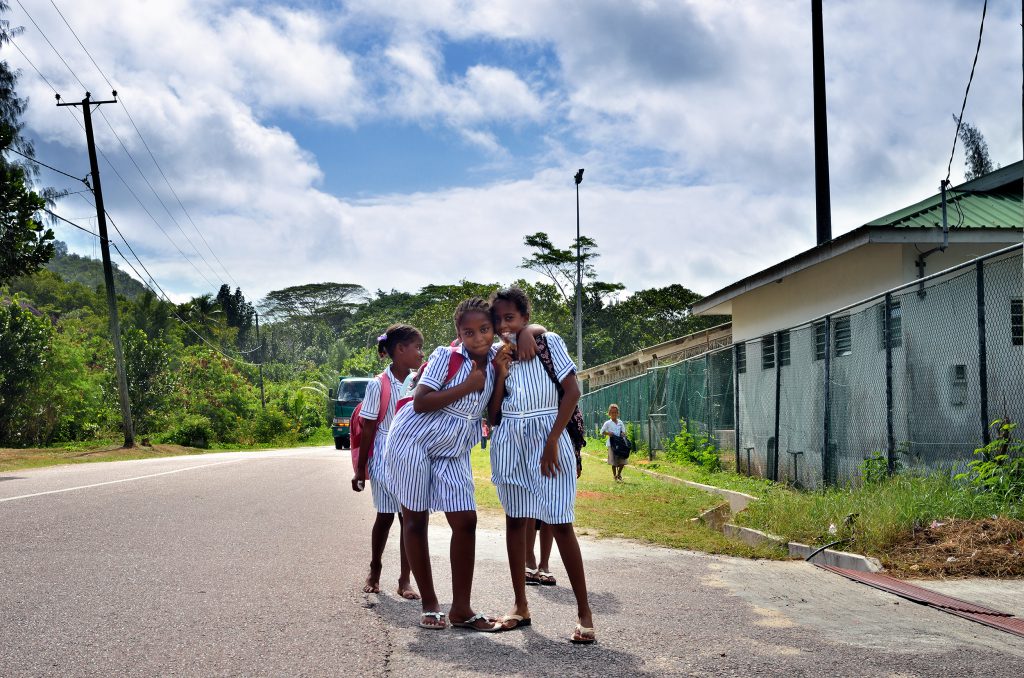
Policy measures and reforms have made it possible for Seychelles to meet the education-related Millennium Development Goals well before 2015. Indeed, the second of the eight development goals launched by the United Nations called for every child in the world, boys and girls alike, to receive a full course of primary school education by 2015. The emphasis on equality in education has significantly addressed differences in achievements based on gender and race, creating a system which provides equal opportunity for all based on ability. Moreover, through the Education Amendment Act in 2017, the Government had been able to ban corporal punishment in schools, and it was committed to ban it in all settings.
A significant project carried out in schools is the “Rainbow Project” which works with children who have been identified by schools as being at risk and the focus is on character building for resilience against drugs and improved behavior for better social skills and school performance. It has been reported that education remains one of the most important sectors benefiting from one of the highest percentages of the national budget, second only to the health sector, and it accounted for nine per cent of the budget in 2017 (OHCHR, 2018).
Risk factors – Country-Specific Challenges
Child labor and Sexual exploitation
Children in Seychelles are engaged in the worst forms of child labor in commercial sexual exploitation (Refworld, 2013). Despitethe fact that the law prohibits the worst forms of child labor and states that the minimum age for employment is 15, “subject to exceptions for children who are employed part time in light work prescribed by law without harm to their health, morals, or education” (Article 31, Constitution of Seychelles), child labor is a reality in Seychelles.
Indeed, Article 31(b) of the Constitution of the Republic of Seychelles stipulates that the minimum age for dangerous, harmful, and unhealthy work should be higher than the minimum age for work of 15 years, though it does not specify an age. What’s more, Article 22(4) of Seychelles’ Conditions of Employment Regulations allows children ages 15 to 17 to work in the restaurant, tourism, or entertainment industries and at night with the written approval of a “competent officer,” though a definition for “competent officer” is not provided in the legislation.
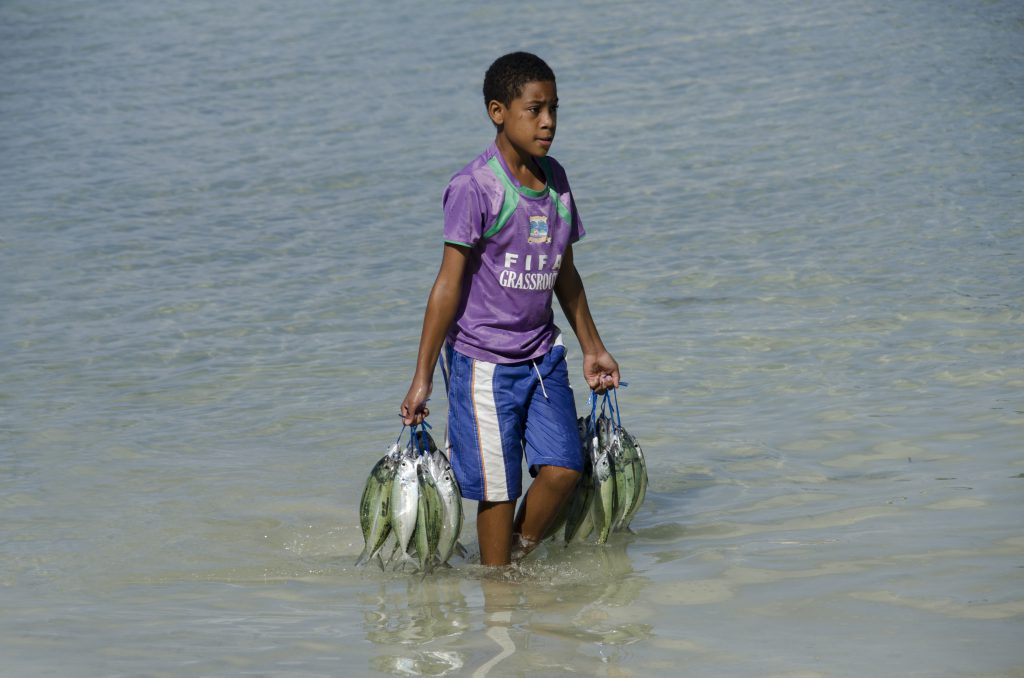
At an international level, Seychelles has ratified all key international conventions concerning child labor (ILO C. 138, Minimum Age; ILO C. 182, Worst Forms of Child Labor; UN CRC; UN CRC Optional Protocol on Armed Conflict; UN CRC Optional Protocol on the Sale of Children, Child Prostitution and Child Pornography; Palermo Protocol on Trafficking in Persons). Indeed, legal revisions are expected to set the minimum age for hazardous work at 18 and develop a list of hazardous occupations prohibited for children.
However, the current situation is that Seychellois children are exploited for commercial sex in nightclubs, bars, guest houses, hotels, brothels, and on the street. Seychelles’ laws do not protect boys from being procured of or offered for prostitution. In 2013, the Government of Seychelles funded programs that include the goal of eliminating or preventing the commercial sexual exploitation of children but, despite these efforts, the Government lacks mechanisms to adequately identify child trafficking victims and provide them with protection and rehabilitation. Besides, the Government has not taken specific actions to identify victims of child trafficking nor to protect children from commercial sexual exploitation associated with tourism.
Despite the prevention and protection system which is not sufficiently regulated and effective, the system of penalties has been reformed. Indeed, the penal code defines a child as a person younger than age 18 and criminalizes practices related to child pornography and the commercial sexual exploitation, sale, offering, and procurement of prostitution of children (Seychelles Human Rights Report, 2019). Moreover, the law prescribes penalties of up to 25 years of imprisonment and a fine up to 800,000 Seychellois rupees ($59,000) for a conviction for child trafficking (United States Department of State, 2019).
It is still unknown whether Seychelles has established laws to protect children from involvement in illicit activities, including drug trafficking. Indeed, it is reported that drug addicts under age 18 are among those at risk of entering commercial sexual exploitation (United States Department of Labor’s Bureau of International Labor Affairs, 2014).
Child Marriage
Child marriage is driven by gender inequality and the role that women are considered to have in the society. There is very limited information on child marriage in Seychelles because there is no publicly available Government data on this issue.
However, Seychelles co-sponsored the 2013 and 2014 UN General Assembly Resolutions to End Child, Early and Forced Marriage worldwide, and signed a Joint-Statement at the 2014 Human Rights Council calling for a Resolution on Child Marriage. Moreover, Seychelles acceded to the Convention on the Elimination of All Forms of Discrimination Against Women (CEDAW) in 1992, which enforces states to ensure full and free consent to marriage. In 1992, Seychelles ratified the African Charter on the Rights and Welfare of the Child, with Article 21 on the prohibition of child marriage.
In 2006, Seychelles ratified the African Charter on Human and People’s Rights on the Rights of Women in Africa, including Article 6 which sets the minimum age for marriage as 18. Under the Civil Status Act 1980, the minimum legal age of marriage is 15 years for girls and 18 years for boys. However, in “grave” situations they could marry before this age if the minister gives consent and this represents a risk because the norm is too vague, thus easy to elude. Seychelles has committed to eliminate child, early and forced marriage by 2030 in line with target 5.3 of the Sustainable Development Goals but there is still a long way to go (Girls not brides, 2019).
Children with Disabilities
Inclusive education for children with disabilities is limited due to lack of qualified personnel. Indeed, although the Constitution and law provide for special protections for persons with physical, sensory, intellectual, and mental disabilities, no laws address access to public buildings, transportation, or Government services, and the Government does not provide such services. This is the reason why most children with disabilities were segregated in specialized schools.
Children and Justice
Under the law of Seychelles, majority and full legal capacity is attained at the age of 18 (Civil Code, Title X, Article 388). Violation of children’s rights must be brought on the child’ behalf by a parent or guardian, with one exception: children over the age of 14 may, with leave of the Family Tribunal, apply to the Tribunal by themselves for a protection order under the Family Violence (Protection of Victims) Act. The Civil Code also provides for the judicial appointment of a guardian ad litem, who shall have powers to bring cases or intervene in proceedings in name or on behalf of a child or young person. If no one else is appointed, the Attorney General shall represent the interest of the child (White & Case LLP, 2015).
The minimum age of criminal responsibility is 12; however, children between the age of 7 and 12 could be held responsible if it is proven that they have understood that they have committed a criminal act. One of the major problems of the system of penalties is that juvenile pretrial detainees and juvenile convicted prisoners are held together with adult prisoners. As a consequence, the rate of inmate-on-inmate violence (physical and sexual) is both increasing and worrying. However, according to the World Prison Brief, prison conditions improved during 2019 with overcrowding being eliminated and violence reduced (Seychelles Human Rights Report, 2019).
Environmental Rights
The Seychelles Constitution guarantees every citizen the right to a clean, healthy and ecologically balanced environment (Article 38) and provides for the fundamental duty “to protect, preserve and improve the environment” (Article 40 (e)).
The main elements of Government’s policy and strategy on environment in relation to children are:
“the responsibility and commitment to ensure a safe and healthy environment in which children will live, grow and prosper; the responsibility to ensure that the environment is protected, maintained and enhanced for the children of today and tomorrow; and the responsibility to ensure that children acquire and develop the attitudes, knowledge and skills that will enhance their role as protectors of the environment.”
OHCHR, 2002
In 1994, the Wildlife Clubs of Seychelles (WCS), a non-government organization (NGO) for young people dedicated to promoting conservation action through environmental education (OHCHR, 2007) was formed. One of the objectives is to increase young people’s knowledge of Seychelles’ biodiversity and mobilize action for conservation. WCS is run by volunteers and provides opportunities for students to learn about environment, to participate in concrete environmental action and to play a role in the society.
Moreover, Seychelles participated in the Earth Summit in Brazil, and the Government made a commitment to implement Agenda 21 by adopting “national sustainability strategies”, increasing the participation of children and young people in matters of environmental policy, and producing periodic national implementation reports.
The work of the Ministry of Environment, Energy and Climate Change is governed by the Seychelles Sustainable Development Strategy 2012-2020, the National Waste Strategy, the National Biodiversity Strategic Action Plan, the Climate Change Strategy, the National Energy Policy, the Water Master Plan and other policy documents (African Lii, 2019). Indeed, Seychelles is running an ecosystem-based climate change adaptation project to mitigate its susceptibility to climate change, by mainly focusing on drought and flooding.
Written by Federica Versea
Last updated on 7 September 2020
Bibliography:
Convention on the Rights of the Child. o. (2017). OHCHR. Retrieved from OHCHR.
Girls not Brides. (2019). Seychelles. Retrieved from Girls not Brides.
World Bank Group. (2020, July 31). World Bank Group. Retrieved from World Bank Group.
World Bank Group. (n.d.). The World Bank in Seychelles. Washington: World Bank.
OHCHR. (2002). Convention on the Rights of the Child – Initial Report of States parties. Retrieved from OHCHR.
Refworld. (2013). Seychelles: minimal advancement. Retrieved from Refworld.
Seylii. (2018). Children Act. Retrieved from Seylii.
World Bank Group. (2020, July 31). The World Bank in Seychelles. Retrieved from World Bank Group.
[1] This article by no means purports to give a full or representative account of children’s rights in Seychelles; indeed, one of the many challenges is the scant updated information on Seychelles children, much of which is unreliable, not representative, outdated or simply non-existent.

